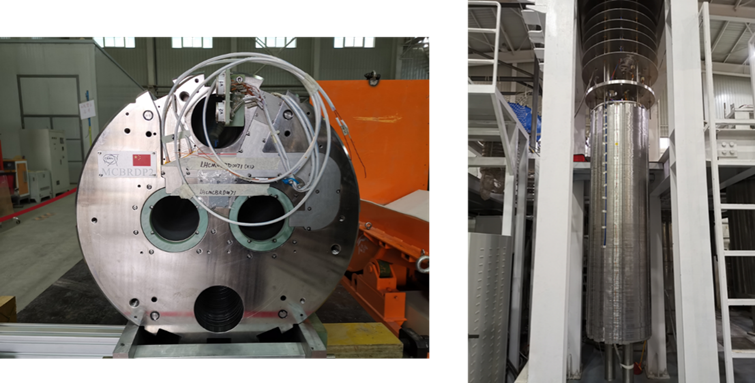
The prototype of canted-cosine-theta (CCT) superconducting magnet, produced by a Chinese team for the High-Luminosity Large Hadron Collider (HL-LHC), passed performance tests recently, and was shipped to Europe from Tianjin port on September 2.
Led by the Institute of High Energy Physics (IHEP) of the Chinese Academy of Sciences (CAS), the Chinese team also includes members from the Institute of Modern Physics (IMP) of CAS and Western Superconducting Technologies Co., Ltd. The team is collaborating with the European Organization for Nuclear Research (CERN) in producing the superconducting magnets, which are called HL-LHC MCBRD (D2 corrector).
The training and the cold test carried out at IMP aim to check if the magnets are up to standard.
After successfully passing the performance tests of magnetic field strength, magnetic field quality and 3.5-hour operation stability under 4.5K environment, the full-scale prototype of CCT double aperture superconducting magnet, which was named MCBRDP2, was shipped to CERN.

MCBRDP2 magnet on site for test preparation (Image by YANG Wenjie)
IMP undertook the task of training and measuring the magnetic field at room temperature and low temperature. Eight rounds of excitation tests were carried out in the low temperature test stage.
After quench training, the maximum operating current of the two apertures reached 422A, and the magnet showed good quench memory effect. Finally, the two apertures were simultaneously excited to the design current (394A) and operated stably for 3.5 hours.
All parameters of the prototype reached the design specification in the 4.5K test. The success of the prototype not only shows the feasibility of domestic technology and process, but also signifies a good start for the subsequent 12 sets of magnets production.

86-10-68597521 (day)
86-10-68597289 (night)

52 Sanlihe Rd., Xicheng District,
Beijing, China (100864)

